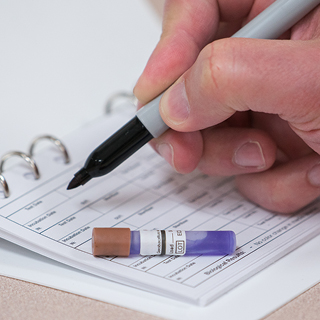Blog
Why Dental Practices Should Adopt Stricter Biological Monitoring Guidelines

Stay Ahead of Potential Guideline Changes
For decades, instrument reprocessing guidelines for dental practices have differed from those in larger healthcare settings. However, a new AAMI (Association for the Advancement of Medical Instrumentation) Working Group began working in 2021 to create guidelines for dental instrument processing based on best practices in the ST79 standard used in healthcare facilities.
This growing expectation means dental practices should begin adapting their biological monitoring practices to align more closely with the stricter standards used in larger healthcare organizations. Doing so will help dental practices anticipate changes and create safer environments for patients.
In this article, we review instrument reprocessing in both dental and larger healthcare settings, as well as discuss the implications of the likely change in guidelines.
Instrument Reprocessing in Dental Environments
Dental instrument reprocessing involves multiple steps to ensure that instruments are safe for reuse. Instruments must be thoroughly cleaned and free of bioburden before effective sterilization can occur, whether through ultrasonic cleaning, manual scrubbing, or automated washers. The chosen method should always follow the instrument manufacturer’s instructions for use (IFU).
Sterilization typically involves heat and steam, using gravity-displacement or dynamic air-removal sterilizers. Biological indicators (BIs) are used to test sterilizer effectiveness in killing highly resistant bacterial spores. The CDC recommends performing this test weekly in dental settings.

Biological Monitoring Options for Dental Practices
Dental practices have options for monitoring sterilization effectiveness, such as mailing biological indicator tests to external labs (which typically take a week for results) or using in-office tests that provide results within 24 hours. However, both methods have drawbacks, including a delay that poses potential safety risks if sterilization is ineffective.
Given the volume of patients and procedures in dental practices, delays in confirming sterilization efficacy could put patient safety at risk. This risk is compounded by varying enforcement of sterilization guidelines at the state level.
Guideline Enforcement Varies by State
Each state dental board may choose to adopt parts of the CDC guidelines for infection control in dental practices. In cases where no specific sterilization requirements exist, dental practices are still held accountable to the CDC guidelines, which serve as the prevailing standard of care.
Recent investigations into safety breaches in dental settings have highlighted the critical importance of proper sterilization practices.
Safety Breaches in Dental Settings
Several investigations within the past decade emphasize the need for rigorous infection control and sterilization protocols in dental practices. Examples include:
- In Seattle, improper sterilization practices risked the safety of nearly 1,300 students.
- In Philadelphia, three dental offices were closed after safety lapses increased the risk of exposure to HIV and hepatitis.
- In Singapore, human error led to sterilization breaches, leaving instruments inadequately processed.
These incidents underscore the need for stricter verification of sterilization processes to ensure patient safety.
Instrument Reprocessing in Healthcare Facilities
Biological monitoring in healthcare facilities follows AAMI ST79 guidelines, which recommend weekly (preferably daily) biological testing of each sterilizer. Monitoring is also required for every load containing implantable devices and for immediate-use steam sterilization cycles, ensuring that sterilization processes are regularly validated to maintain patient safety.

Biological Monitoring Advancements in Healthcare Facilities
Healthcare facilities have adopted rapid readout biological indicators, providing results within minutes. This advancement minimizes the risk of releasing non-sterile instruments and reflects a commitment to ensuring sterilization safety and effectiveness.
Dental Practices Have the Opportunity to Be Proactive
As the healthcare landscape continues to evolve, dental practices should consider adopting stricter biological monitoring guidelines similar to those in larger healthcare organizations. Aligning with these standards will help dental practices better anticipate regulatory changes and safeguard patient safety.
Early adoption of these practices will significantly reduce the risk of patient harm, which remains a cornerstone of successful healthcare.

